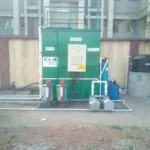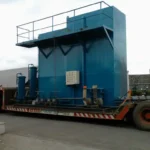

Sewage Treatment Plant Manufacturer
Sewage Treatment Plant treats wastewater/sewage, breaking it down into a cleaner effluent that can be safely reused or released. STPs are crucial because they help maintain groundwater balance, prevent the spread of diseases, and curtail environmental degradation. In the residential context, STP-treated water can be used for washing cars, gardening, construction, etc. It helps reuse water and avoids water scarcity.
STPs are crucial to human society and the environment’s well-being in their entirety. As the name suggests, these plants treat sewage water and cleanse it before it is released into water streams, rivers, etc., or reused in any form. But what exactly does an STP do, and how do the concerned authorities ensure its efficiency? Let’s delve into a few aspects of STP operation and maintenance.
Get an advanced sewage wastewater treatment solution in Pune with our reliable STP plant systems. Designed for residential, commercial, and industrial needs, our plants ensure efficient waste management, eco-friendly operations, and compliance with environmental regulations. From installation to maintenance, we provide end-to-end services using modern technology for effective sewage treatment. Choose our expert team of STP plant manufacturers in Pune for customized, cost-effective, and sustainable solutions.
STP works in four phases. Let’s overview each.
STP works in four phases. Let’s overview each.
Maintenance is essential to maintain the STP’s efficiency. While low-quality STPs need frequent maintenance, high-quality STPs also aren’t devoid of maintenance, although not as frequent. However, the latter also requires de-sludged and servicing at least once a year. After the desludging process, the plant should be refilled with water so that internal and external pressure is balanced. STP operators and maintenance professionals must prevent the entry of water, as it could wash out all the bacteria and result in flooding.
STP maintenance includes checking the following.
Are you looking for STP operation and maintenance experts? Partner with CHFour. We are reliable STP manufacturing, operation, and maintenance professionals with years of experience and a proven track record within the STP space. Call +91 8055573883 or write to us at info@chfour.net to know more.






































We are a Pune based company, dedicatedly working for a green and clean environment.